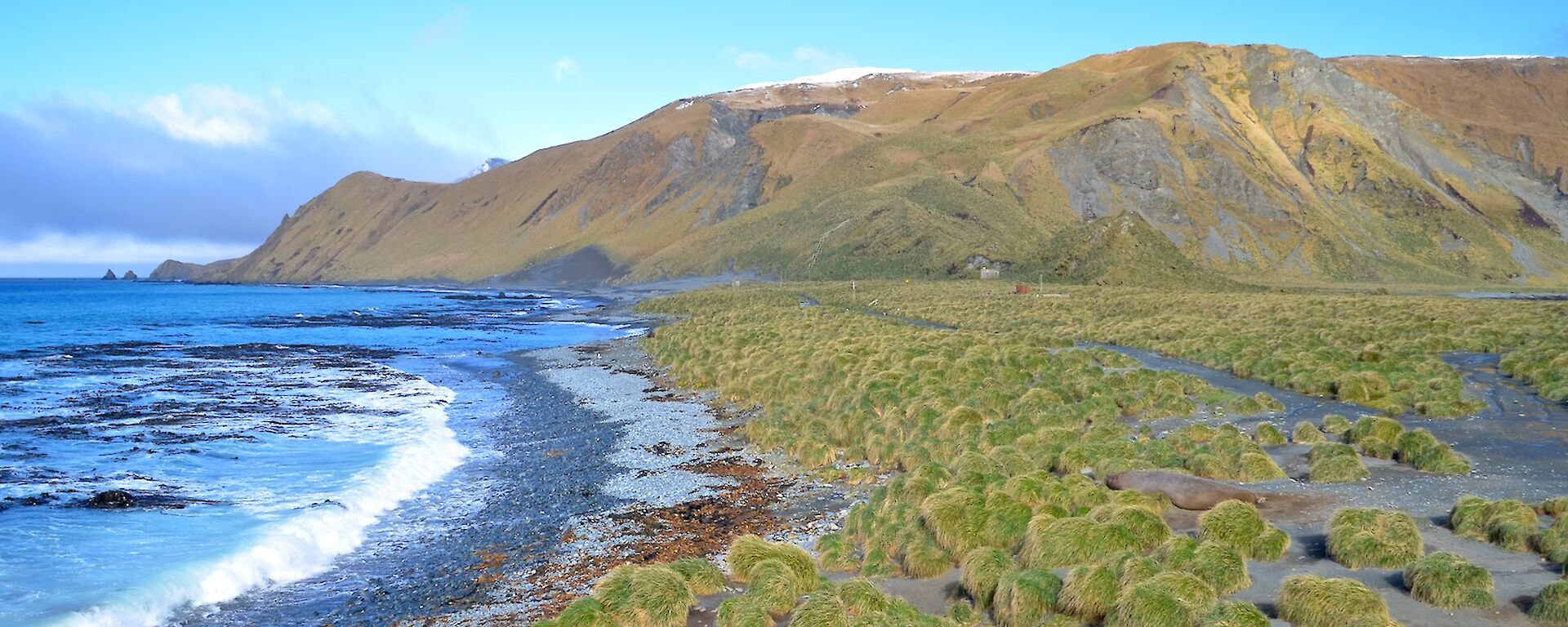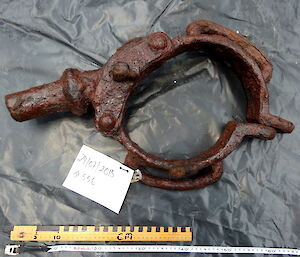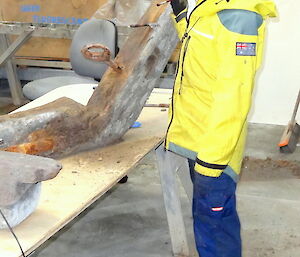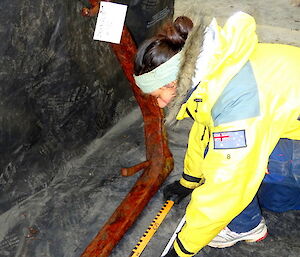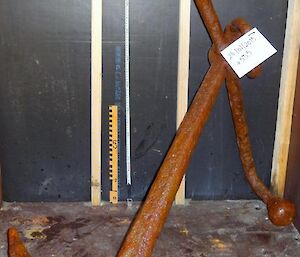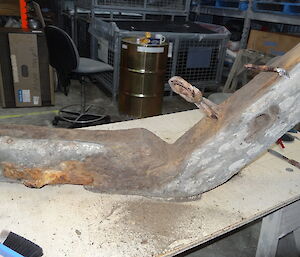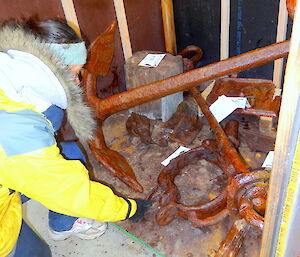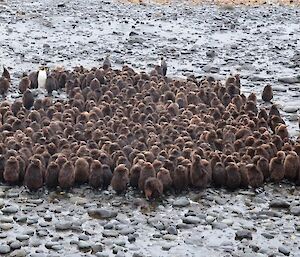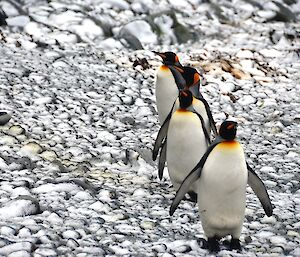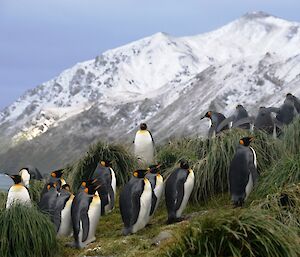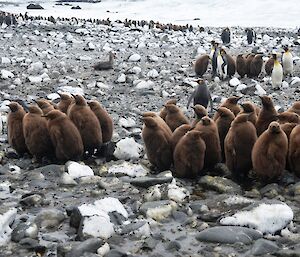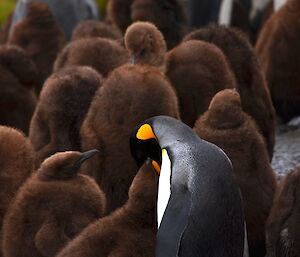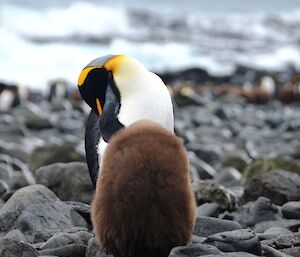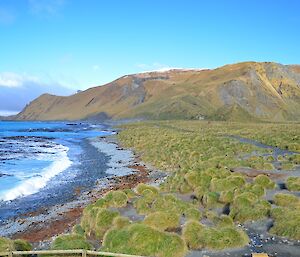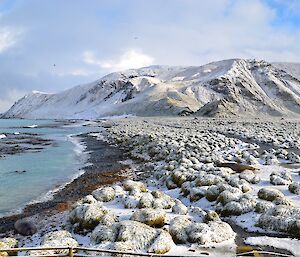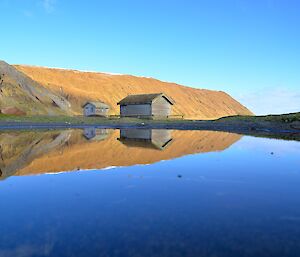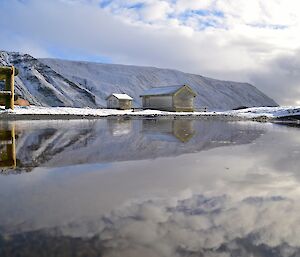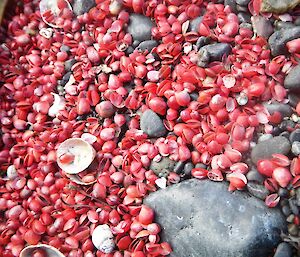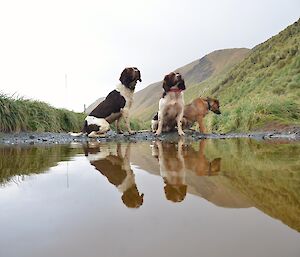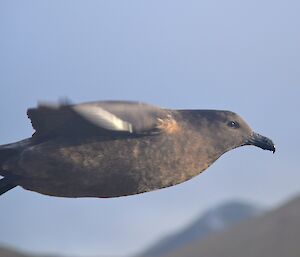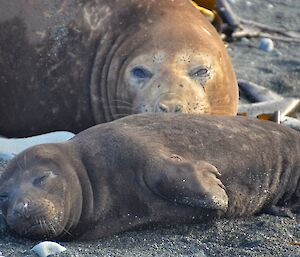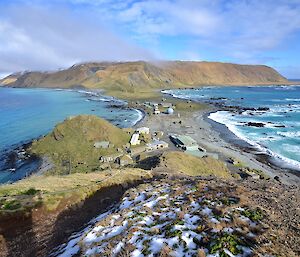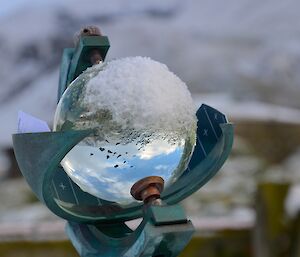We have begun the preservation of some of Macquarie Islands artefacts. The plan is to ensure all current and future artefacts found on Macquarie Island are preserved, stored and catalogued.
I started with artefacts that have been in storage and my task has been to clean each artefact to the best of my ability. This was done very gently with a brush and small pick then to paint any metallic surfaces with Fisholene. This helps to take the oxygen out of the metal and helps to preserve it preventing it from further decaying.
After the cleaning and preserving stage has been completed, I take photos of each item and enter them into a data base that will available for future use. All the artefacts are now in storage out of the elements.
Patty Villegas
This week at Macquarie Island: 13 September 2013
Macquarie Island artefacts
King penguin census
The annual king penguin chick census has recently been undertaken. The easiest part of the task involves travelling around the islands coastline and taking photographs of the penguin chicks on the beaches.
At this time of the year the chick crèches are well established and the adults whilst, still in the general area are more dispersed away from the chick group. This makes the task of photographing the chicks quite simple.
Craig, one of the BOM observers based here on Macca, jumped at the chance to volunteer his time for the task. His assistance with the task as the scribe was invaluable (refer Icy news story from the 23 August). I was able to take the photo’s, while Craig took the notes. It might sound simple but the note taking was crucial to the process to ensure the census is as accurate as it can possibly be.
Approximately 170 images need to be sorted, files associated to specific colonies once I’m back at the office. Time spent in the field is critical. Realistically there is only one chance to get the images, a round trip takes about 7 days, and Craig and I walked approximately 80kms. Such is the nature and beauty of research on Macquarie Island.
The hard work however begins when I get home after the trip. All of the photographs are downloaded, some images merged to form a more complete crèche picture. Images are subsequently analysed using a computer software package that helps to count crèche numbers. Sounds very simple, however the programme used relies on one mouse click per chick, each image is individually analysed on screen — the software simply helps to keep count! Thankfully this year, I’ve got Patty to help as well!
The penguin census has been undertaken annually for many years here on Macquarie Island. Current estimates place the Macquarie Island population at being approximately 120,000 breeding pairs, part of a global population of between 2 to 3 million birds. Population estimates on Macca have varied over the years. 2007 was the peak of recent times with 78714 chicks recorded. Last year, my colleague Richard counted 66462 chicks… that’s a lot of right finger mouse clicks!
In isolation, the penguin census provides some interesting statistics. However when this data is analysed and considered in the context of the broader scientific studies associated with ecosystem health and function of the greater subantarctic, it is a very important piece of the puzzle.
Chris Howard (Ranger)
More about the photos below
Penguin crèche at Green Gorge: How many in the crèche? Penguin chicks form tight crèches. There is survival in numbers, and the large group also helps with protection from the harsh Winter environment. A couple of attendant adults can be seen near the outer edge. Hungry giant petrels are often seen trying to scatter the crèches in order to isolate a single chick. Winter is a hard time for penguin chicks — not all survive. Survivors of this group that make it through winter, will fledge in the warmer months of Summer and develop the brilliant plumage of the adult birds. Correct guess for the number of chicks — 514.
A group of adult king penguins away for the crèche: These birds are observed away from the crèche. Time will tell if these birds are due to mate this coming season. The complete breeding cycle for king penguins takes approximately 14 months meaning that an adult pair will typically breed twice in 3 years.
Adult penguins against the backdrop of Mt. Aurora: The brilliant gold facial plumage of the adult birds provides a striking contrast against the brilliance of the cold snow covered peak.
Penguin adult with chick: Despite the hustle and bustle of crèche life, there is the occasional bit of quiet time.
Adult bird on edge of crèche: An adult penguin approaches the edge of a crèche, possibly looking for its young. Amazingly, adult birds are able to identify their own chick amongst the sea of chocolate brown downy feathers. The excitement of these chicks might suggest that they haven’t been fed for a while. Food resources are hard to find during Winter. Adult birds need to feed themselves as well as their young, there may be long periods between meals for the chicks
Adult feeding chick: Finally, the adult bird finds its chick. Food resources are hard to find during winter. Adult birds need to feed themselves as well as their young, there may be long periods between meals for the chicks. The adults will regurgitate partially digested food straight into the mouth of the eager hungry chick. King penguins feed on fish and squid.
Four Seasons in One Day
On Tuesday the day dawned bright and crisp with the temperature hovering a couple of degrees above freezing. It was a great opportunity to go out and enjoy the calm conditions and take plenty of photos.
I ventured up the Wireless Hill track to North Head (a photo of this appears in the Macca Gallery). I also wandered around station taking advantage of the good light and conditions.
By late morning a darkening cloud band could be seen on the western horizon. Then in the early afternoon, the temperature dropped to freezing and the cloud rolled over the island and proceeded to dump heavy snow.
By mid afternoon the scene had changed significantly with all the bright colours of the morning now washed out by shades of white.
A low pressure system had passed over Macca with the barometer bottoming out at 959 hPa.
The following photos were taken from two different locations, just under five hours apart. It is hard to believe that it was the same day.
Macca Gallery
This weeks gallery has a wide variety of images. We have a great view down island from North Head, we see the first elephant seal pup seen on the isthmus. Chris shows us the beautiful red-coloured shells. Three of the MIPEP dogs pose in front of a puddle. A skua is captured in flight and finally we gaze into a crystal ball.

